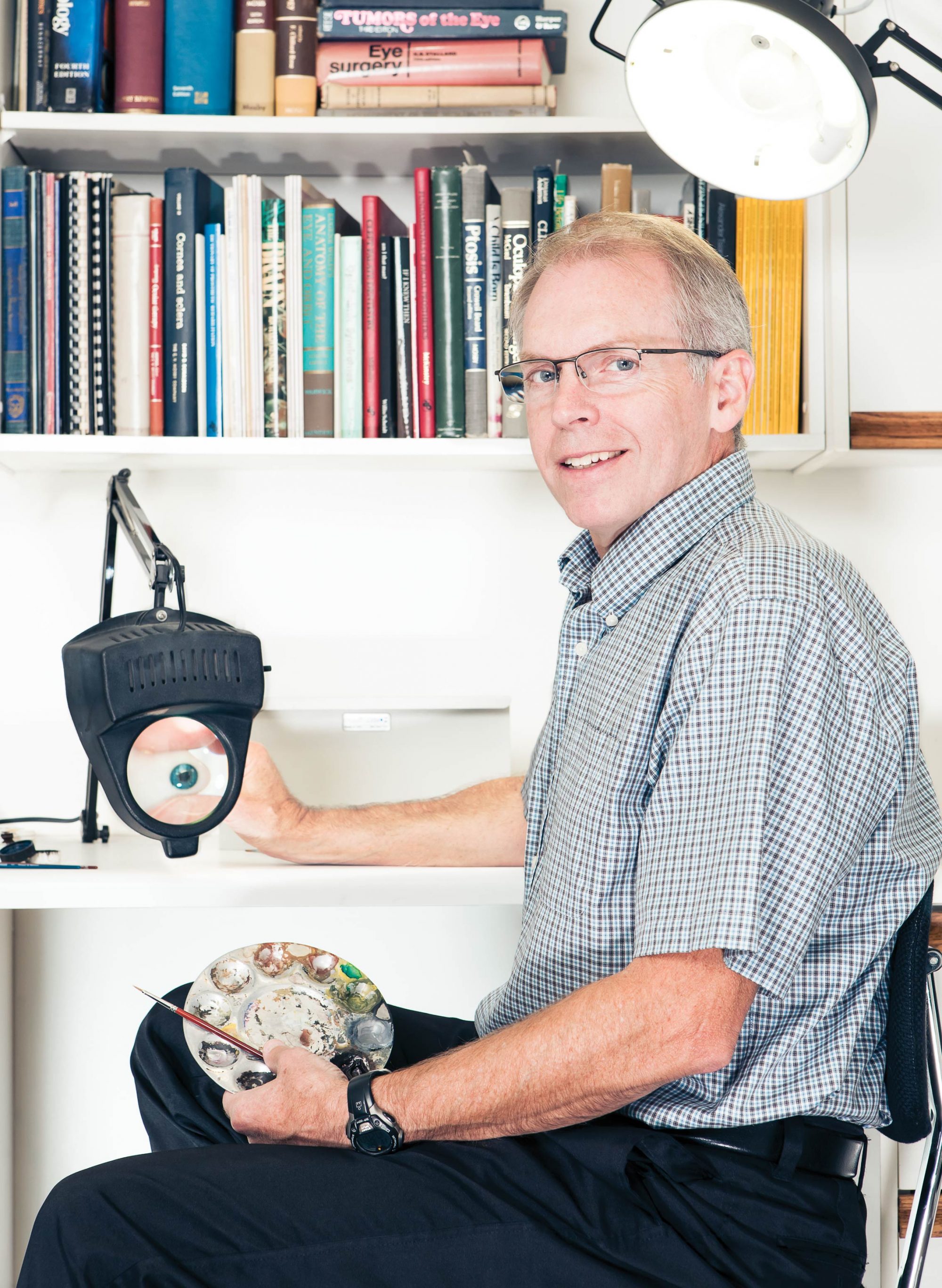Who: Ian McRobbie
Age: 54
Job: Ocularist
Experience: Ian McRobbie has sculpted, painted and created 4,000 artificial eyes over the last 26 years. McRobbie is the man to see when a patient – who could be from anywhere across northern Alberta to the majority of the western Arctic – loses an eye to events such as trauma, birth defect or disease.
The NAIT biological sciences graduate began his career after an eight-year stint in a Multiple Sclerosis research lab at the University of Alberta. He was inspired after his brother-in-law, Jim Willis, took McRobbie on a tour of his office.
“It turns out the answer was staring me in the face all along,” says McRobbie, “I thought, ‘oh man, this is what I need to do. It’s everything I want in a career.’ I deal with people, there’s an artistic element and I can work with my hands.”
McRobbie apprenticed under Willis for five years, and received his certification from the American Society of Ocularists in 1993. He owns and operates Willis’s former office, LeGrand Northwest Ocularist (2013) Inc., in Edmonton. He’s served as an associate editor and a member of the editorial board for The Journal of Ophthalmic Prosthetics, contributed articles to The Journal of the American Society of Ocularists, and co-authored a chapter of the book, Advances in Ophthalmic Plastic and Reconstructive Surgery.
– “The entire field of custom ocularistry is probably only 65 years old. So here [in the prairies] , there was no one making custom eyes for anybody until around 1974. Before that, you would get a tray of glass eyes and keep trying them on until you had the closest approximation in colour and fit.
– “The first plastic eyes were made toward the end of World War II, when the U.S. military put dental technicians to the task of creating artificial eyes to replace the glass ones that relied on glass supplied from Germany. They adapted their technology to make eyes out of the plastic and acrylic already in place for dentures.
